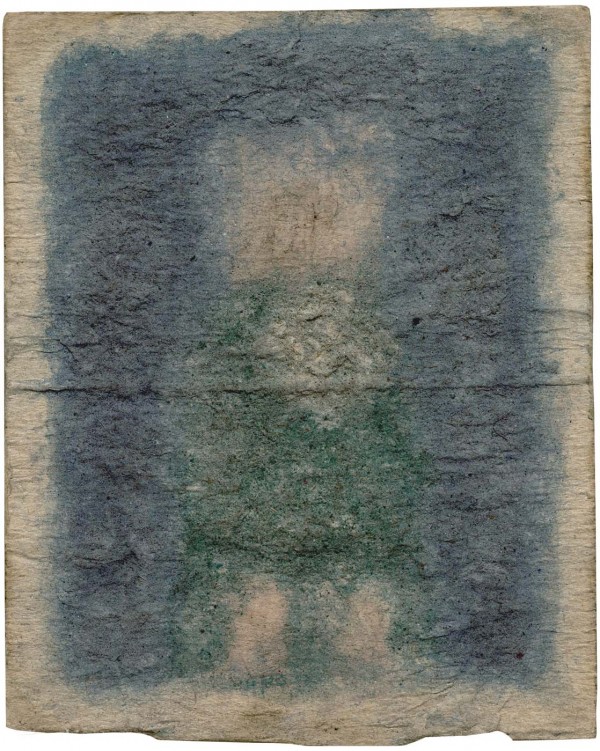Born deaf, James Castle was never able to read, write, speak or even read lips. He attended the Idaho State School for the Deaf and Blind in Gooding, from 1910 to 1915 and would remain all his life on the family farm. His artistic creation is rich thanks to the multiplicity of subject matter he portrays: pictures of family members, imaginary calendars, references to pop culture, memories of the school for the deaf and blind, everyday life at the farm. The store and the post office run by his father in the village made it possible for him to use packages, cartons or advertisements. He also used pieces of cut wood or soft cardboard which he rolled and dipped in a mixture of soot, crepe paper and saliva. He often incorporated apricot kernels, feathers from broken pens or bits of string, recalling the techniques of famous contemporary artists (Joseph Cornell, Robert Rauschenberg) which he had, however, no knowledge of. The graphic minimalism that characterizes his drawings – his ghostly, almost abstract figures are among the most remarkable – is not a sign of a lack of ability but of a sophisticated eye, turning the mundane details of everyday life into dark paintings. His work has been known from 1960, and he attended his first retrospective in Boise, the capital of Idaho, in 1963. In recent years, the Philadelphia Museum of Art organized a solo show in 2008-2009, presented later in other American museums. A major exhibition James Castle. Mostrar y almacenar was held in the Reina Sofia Museum in Madrid in 2013.
